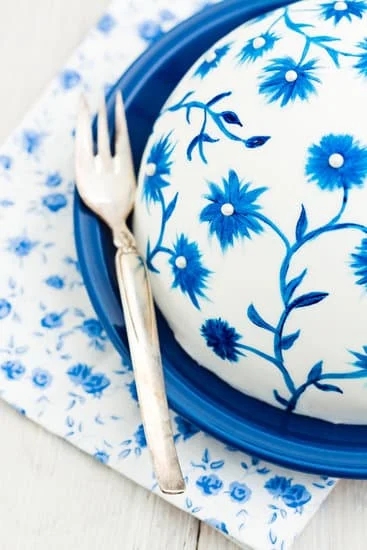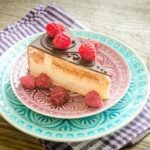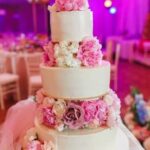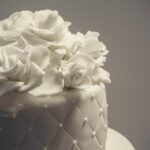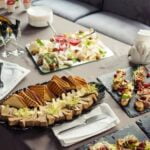Buttercream is a beloved and versatile option for decorating cakes, providing a smooth and creamy canvas to unleash your creativity. Whether you’re a novice baker or a seasoned pro, mastering the art of decorating cake buttercream opens up endless possibilities for creating stunning and delicious confections.
There are various types of buttercream to explore, such as American, Swiss, and Italian buttercream, each offering unique textures and flavors to suit different preferences. The choice of buttercream can significantly impact the overall look and taste of your cake, so understanding the differences between them is essential for successful cake decorating.
In this article, we will delve into the world of buttercream cake decorating, discussing the tools and equipment needed, tips for achieving the perfect consistency and flavor, step-by-step tutorials on crumb coating cakes, advanced decorating techniques like piping and rosettes, as well as creative ideas for designing with buttercream flowers, ombre patterns, and geometric shapes. So get ready to elevate your baking game with these sweet and artistic techniques.
Types of Buttercream
Buttercream is a versatile and delicious option for decorating cakes, offering a smooth and creamy texture that can be easily manipulated to create various designs. There are several types of buttercream that can be used in cake decorating, each with its own unique characteristics and flavor profiles. Here are the three main types of buttercream commonly used by bakers:
- American Buttercream: This type of buttercream is made from butter, powdered sugar, and vanilla extract. It is easy to make and has a sweet and rich flavor. American buttercream is great for beginners as it is simple to prepare and holds up well in warm temperatures.
- Swiss Meringue Buttercream: Swiss buttercream is created by whisking egg whites and sugar over a double boiler until the mixture reaches a specific temperature. Once cooled, butter is added gradually to create a light and silky frosting. Swiss meringue buttercream has a less intense sweetness compared to American buttercream.
- Italian Meringue Buttercream: Italian buttercream involves heating sugar into a syrup which is then poured over whipped egg whites to form a stable meringue. Softened butter is incorporated into the meringue to create a smooth and glossy frosting. Italian meringue buttercream has a luxurious texture and is less sweet than American buttercream.
Each type of buttercream offers different benefits depending on the desired outcome of your cake decoration project. Experimenting with these different varieties can help you discover which one works best for your decorating needs.
When it comes to decorating cakes with buttercream, having the right tools and equipment can make all the difference in achieving professional-looking results. Some essential items you may need include offset spatulas for smoothing out the frosting, piping bags and tips for creating intricate designs, bench scrapers for achieving sharp edges on cakes, and turntables for easy rotation while decorating.
Investing in quality tools will not only make the process smoother but also allow you to explore various techniques in decorating cake buttercreams creatively.
Tools and Equipment Needed for Decorating With Buttercream
Buttercream is a popular and versatile option for decorating cakes due to its smooth texture, delicious flavor, and ease of use. To create beautiful designs with buttercream, it’s essential to have the right tools and equipment on hand.
One of the most important tools for decorating cakes with buttercream is a sturdy turntable, which allows for easy spinning and smooth application of the frosting. Additionally, an offset spatula is crucial for spreading buttercream evenly and achieving clean lines on the cake’s surface.
Piping bags and various tips are also indispensable tools when working with buttercream. Different piping tips can create a wide range of designs, from intricate flowers to elegant borders. Couplers are useful for easily switching between different tips without having to change piping bags. A bench scraper or icing smoother is helpful for creating sharp edges and smoothing out any imperfections in the buttercream finish.
When decorating with buttercream, having a good quality stand mixer or hand mixer is essential for achieving the right consistency. Mixing bowls in various sizes are also important for preparing different amounts of buttercream at once. Lastly, investing in a good quality offset spatula or palette knife can make a significant difference in achieving professional-looking results when decorating cakes with buttercream.
Tips for Preparing the Perfect Buttercream
Buttercream is a beloved frosting option for decorating cakes due to its versatility and delicious taste. Whether you are a novice baker or an experienced cake decorator, mastering the art of preparing the perfect buttercream is essential for achieving beautifully decorated creations. Here are some tips to help you achieve the right consistency and flavor when working with buttercream:
- Choose the Right Butter: Use unsalted butter at room temperature for the best results. This will ensure that the butter incorporates smoothly into the other ingredients without creating lumps.
- Sift Your Powdered Sugar: To prevent any clumps in your buttercream, always sift your powdered sugar before adding it to the mixture. This will result in a smoother frosting.
- Adjust Consistency Carefully: Depending on your decorating needs, you may need to adjust the consistency of your buttercream. Add more powdered sugar for a stiffer frosting that holds its shape well, or thin it out with milk or cream for smoother spreading or piping.
Achieving the perfect flavor in your buttercream is just as important as getting the right consistency. Here are some tips to enhance the taste of your frosting:
- Flavor Extracts: Experiment with different flavor extracts such as vanilla, almond, or citrus to add depth and complexity to your buttercream.
- Fresh Ingredients: Use high-quality ingredients like fresh cream and real vanilla beans to elevate the flavor of your buttercream. Avoid using imitation extracts or artificial flavors for a more authentic taste.
- Balancing Sweetness: Taste your buttercream as you go and adjust the sweetness level by adding more powdered sugar or a pinch of salt if needed. Finding the right balance will ensure that your frosting complements the cake rather than overpowering it.
By following these tips, you can prepare a delicious and perfectly textured buttercream that will take your cake decorating skills to the next level. Experiment with different flavors and techniques to create stunning designs that will impress all who see and taste your creations.
Step-by-Step Tutorial
Gathering Your Supplies
Before you begin crumb coating your cake with buttercream, it’s essential to gather all the necessary supplies. You will need a cooled and leveled cake, a turntable for easy maneuvering, an offset spatula for spreading the buttercream smoothly, and of course, your prepared buttercream in the desired flavor and color.
Applying a Thin Layer of Buttercream
To start crumb coating your cake, place a dollop of buttercream on top of your cake layer. Using the offset spatula, gently spread the buttercream over the top and sides of the cake in a thin layer. This initial coat is meant to seal in any loose crumbs that may otherwise mix into your final layer of frosting.
Chilling and Final Coating
After applying the thin layer of buttercream, chill the cake in the refrigerator for about 15-20 minutes to allow the frosting to set. Once chilled, add a thicker layer of buttercream over the crumb coat. Smooth out any imperfections with an offset spatula or bench scraper, ensuring that the entire cake is covered evenly. Now your cake is ready for final decorations such as piping designs or fondant embellishments.
By following these simple steps, you can achieve a beautifully crumb-coated cake with buttercream that will serve as a smooth foundation for all your decorating ideas. Remember to have fun and experiment with different techniques to create stunning cakes that are not only visually appealing but also delicious to taste.
Advanced Decorating Techniques
Buttercream frosting is not only delicious but also a versatile choice for decorating cakes. Advanced decorating techniques elevate your cake design to the next level, creating beautiful and intricate patterns that look professional and impressive. From piping delicate designs to creating textured buttercream finishes, there are endless possibilities when it comes to decorating with buttercream.
Piping Techniques
Piping involves using a pastry bag fitted with various tips to create intricate designs on cakes. You can experiment with different tip shapes and sizes to achieve different patterns, such as swirls, stars, shells, and more. Practice controlling the pressure on the bag to create consistent lines and shapes. Piping allows you to add personalized messages or elaborate decorations to your cake effortlessly.
Rosettes and Scallops
Rosettes are classic buttercream decorations that resemble flowers with tightly clustered petals. Start by piping a small mound of frosting in the center and then continuously spiral around it, building layers of petals until you achieve the desired size. Scallops, on the other hand, are created by squeezing out small dollops of frosting in a repetitive pattern along the edges of the cake. Both techniques add elegance and dimension to your cake design.
Textured Buttercream
Textured buttercream creates visual interest by incorporating different textures into your cake decoration. You can achieve this effect by using tools such as spatulas, combs, or even kitchen utensils to create patterns like ruffles, waves, or basketweave. Experiment with applying varying levels of pressure and angles to create unique textures that will make your cake stand out. Textured buttercream adds depth and sophistication to your cake design while showcasing your creativity in decorating.
Decorating Ideas
Buttercream is a popular choice for decorating cakes due to its versatility and ability to create stunning designs. One of the most charming ways to adorn a cake with buttercream is by incorporating buttercream flowers. These intricate floral decorations can be made using piping techniques with different shaped tips. From roses to daisies, buttercream flowers add a beautiful and natural touch to any cake, perfect for special occasions like weddings or birthdays.
In addition to buttercream flowers, ombre designs are another creative way to elevate your cake decorating skills. Ombre involves blending different shades of color together seamlessly, creating a gradient effect on the cake’s surface. With buttercream, you can easily achieve this gorgeous look by gradually mixing various tones in the frosting and smoothly applying them from dark to light. Ombre cakes are visually appealing and make a stunning centerpiece at any event.
If you’re looking for a more modern and bold approach to cake decoration, geometric patterns are an excellent choice when working with buttercream. Geometric designs can range from simple lines and shapes to intricate patterns like chevrons or hexagons.
Using piping bags and stencils, you can create clean and precise geometric decorations that will surely impress your guests. Experimenting with different colors and shapes allows for endless possibilities in designing geometric buttercream patterns that match your desired theme or aesthetic.
| Buttercream Decorating Ideas | Description |
|---|---|
| Buttercream Flowers | Intricate floral decorations created using piping techniques with different shaped tips. |
| Ombre Designs | Gradient effect achieved by blending different shades of color in the frosting from dark to light. |
| Geometric Patterns | Clean and precise designs ranging from simple shapes to intricate patterns using piping bags and stencils. |
Troubleshooting Common Buttercream Decorating Issues
Buttercream is a popular choice for decorating cakes due to its versatility and delicious taste. However, there are common issues that decorators may encounter while working with buttercream. Some of the most frequent problems include cracking, melting, and air bubbles in the buttercream. Understanding how to troubleshoot these issues can help ensure a successful cake decorating experience.
When it comes to cracking in buttercream, the main culprit is often temperature fluctuations. To prevent this problem, make sure your cake layers are completely cooled before applying the buttercream. Additionally, avoid exposure to extreme temperatures after decorating the cake. If cracks do appear, gently smooth them out with an offset spatula or piping bag filled with more buttercream.
Melting buttercream can be a frustrating issue, especially in warm environments. To prevent this from happening, consider using a high-quality unsalted butter with a high-fat content when making your buttercream. If you notice your buttercream starting to melt while decorating, place the cake in the refrigerator for a few minutes to firm up the buttercream before continuing. Another trick is to add a small amount of powdered sugar to stiffen up the mixture without compromising its flavor.
Air bubbles in buttercream can lead to an uneven and unappealing finish on your cake. To avoid this problem, try tapping the filled piping bag against a flat surface before starting to pipe decorations onto the cake. This will help release any trapped air inside the bag. Additionally, using a paddle attachment on your mixer instead of a whisk attachment when making the buttercream can help minimize air incorporation into the mixture.
| Common Issue | Troubleshooting Tips |
|---|---|
| Cracking | Ensure cake layers are completely cooled before applying buttercream |
| Melting | Use high-quality unsalted butter and refrigerate cake briefly if necessary |
| Air Bubbles | Tap piping bag before using and use paddle attachment on mixer when making buttercream |
Conclusion
In conclusion, buttercream frosting truly stands out as a versatile and delicious option for decorating cakes. With its smooth texture, ability to hold intricate designs, and endless flavor possibilities, buttercream opens up a world of creative opportunities for bakers and decorators alike. Whether you choose American, Swiss, or Italian buttercream, the key is in mastering the consistency and flavor to achieve stunning results.
As you embark on your journey into buttercream cake decorating, make sure to equip yourself with the necessary tools and equipment to bring your visions to life. From piping bags and tips to offset spatulas and turntables, having the right supplies on hand will make the process smoother and more enjoyable. And don’t forget to experiment with different techniques such as piping, rosettes, scallops, and textured effects to take your creations to the next level.
So next time you find yourself faced with a blank canvas of cake, don’t hesitate to let your creativity shine through with buttercream. Whether you opt for delicate buttercream flowers, trendy ombre designs, or bold geometric patterns, remember that each creation is a celebration of your unique style and artistry. Embrace the challenges of troubleshooting common issues like cracking or melting, but above all else, have fun exploring the endless possibilities that decorating with buttercream can offer. Happy decorating.
Frequently Asked Questions
What Is the Best Buttercream for Cake Decorating?
The best buttercream for cake decorating is often Swiss meringue buttercream due to its smooth texture and ability to hold intricate designs. It is made by cooking egg whites and sugar before adding butter.
What Is the Trick to Buttercream Frosting?
The trick to buttercream frosting is ensuring that your ingredients are at the right temperature – softened butter but not melted, and room temperature eggs. It’s also important to beat the butter until it’s light and fluffy before adding sugar.
What’s the Best Icing to Decorate a Cake?
The best icing to decorate a cake really depends on personal preference and the desired outcome. However, many bakers swear by Italian meringue buttercream for its stability and silky texture, making it ideal for intricate decorations and smooth finishes on cakes.

Welcome to our cake decorating blog! My name is Destiny Flores, and I am the proud owner of a cake decorating business named Cake Karma. Our mission is to provide delicious, beautiful cakes for all occasions. We specialize in creating custom cakes that are tailored specifically to each customer’s individual needs and tastes.

